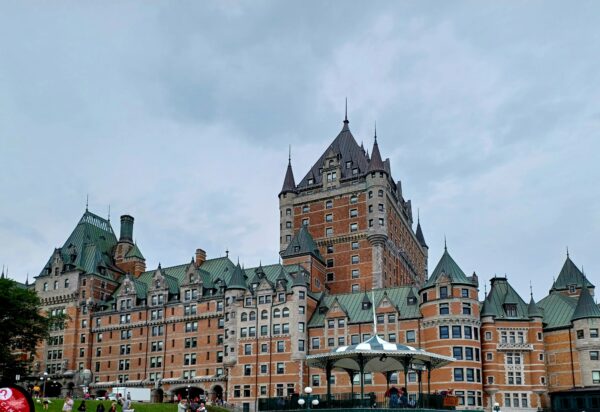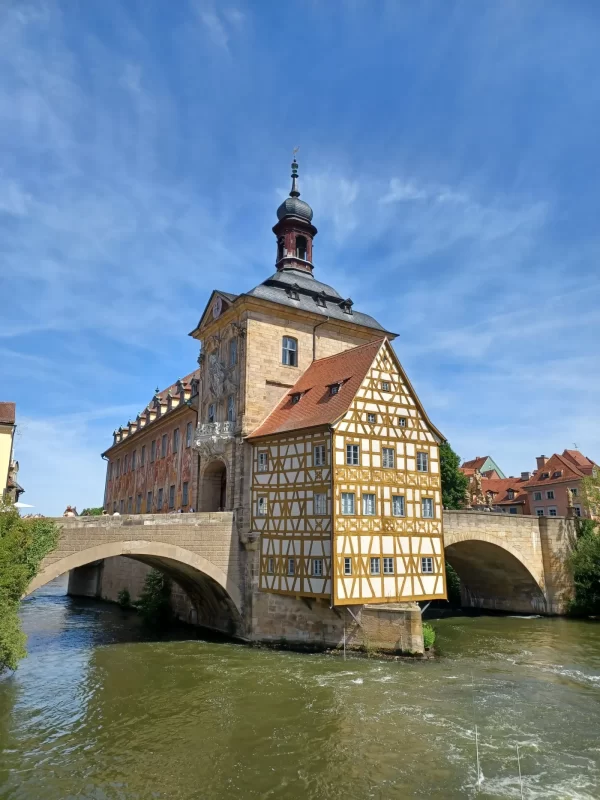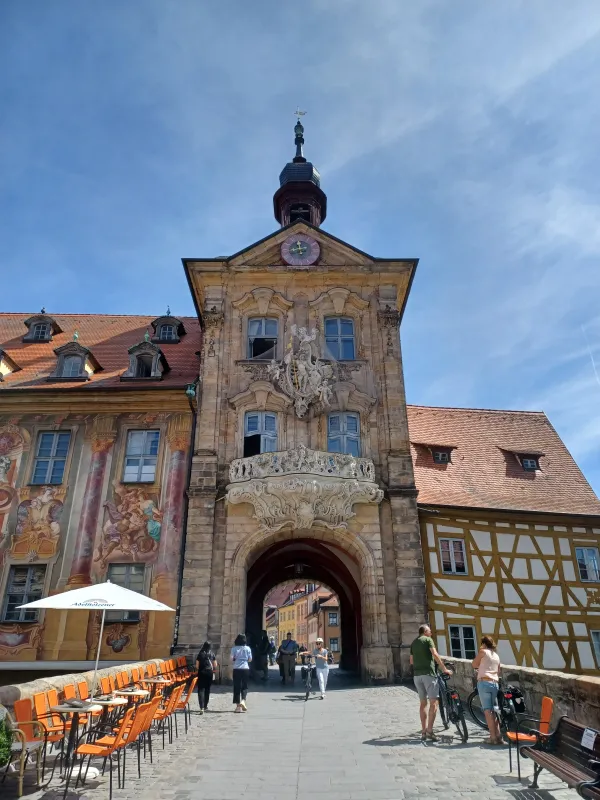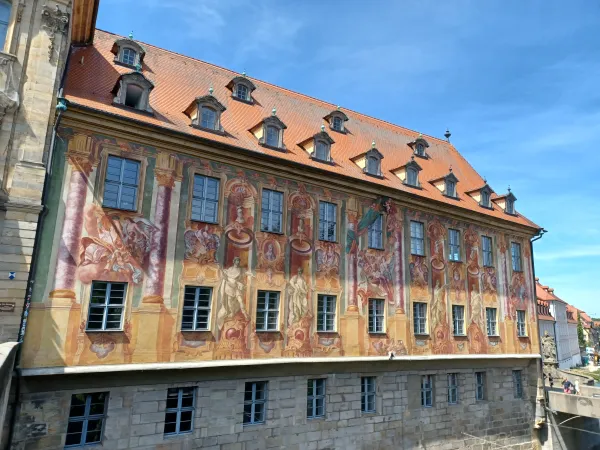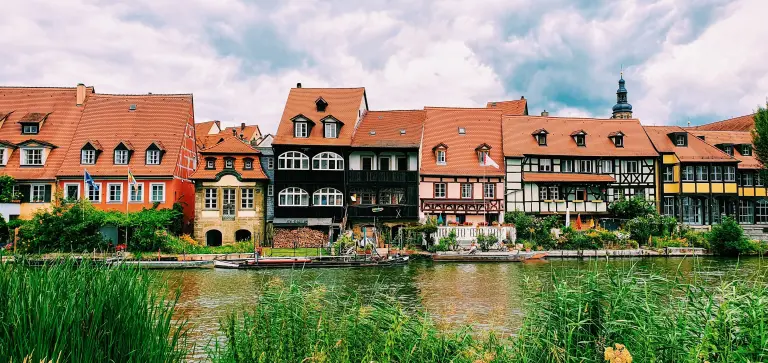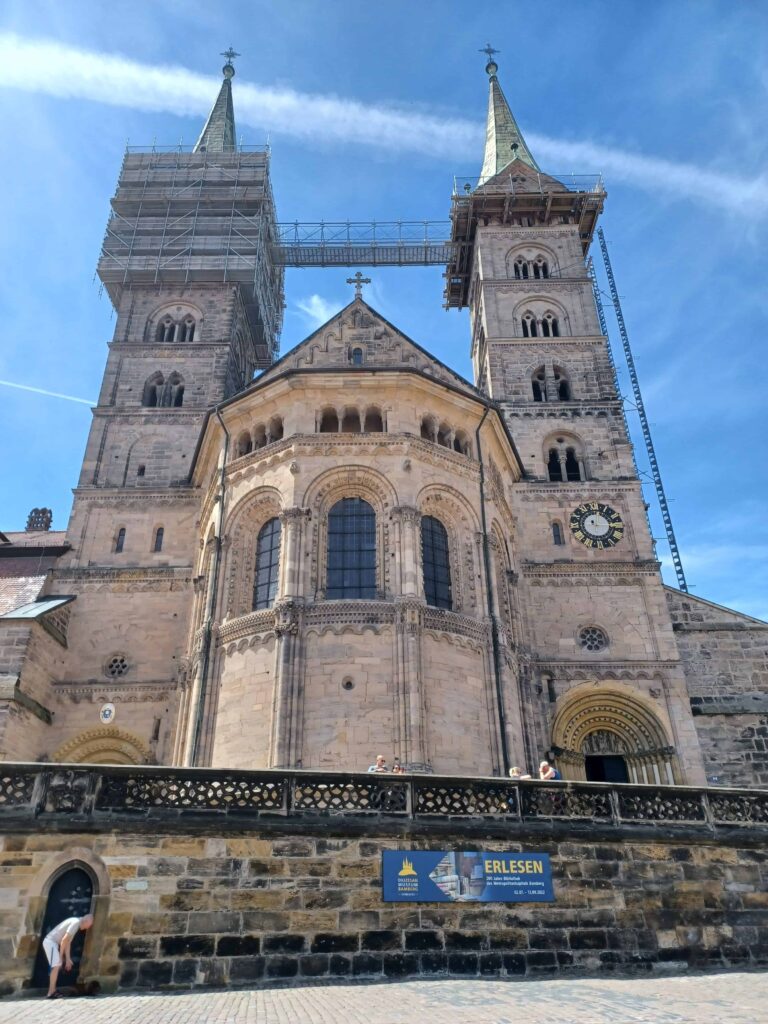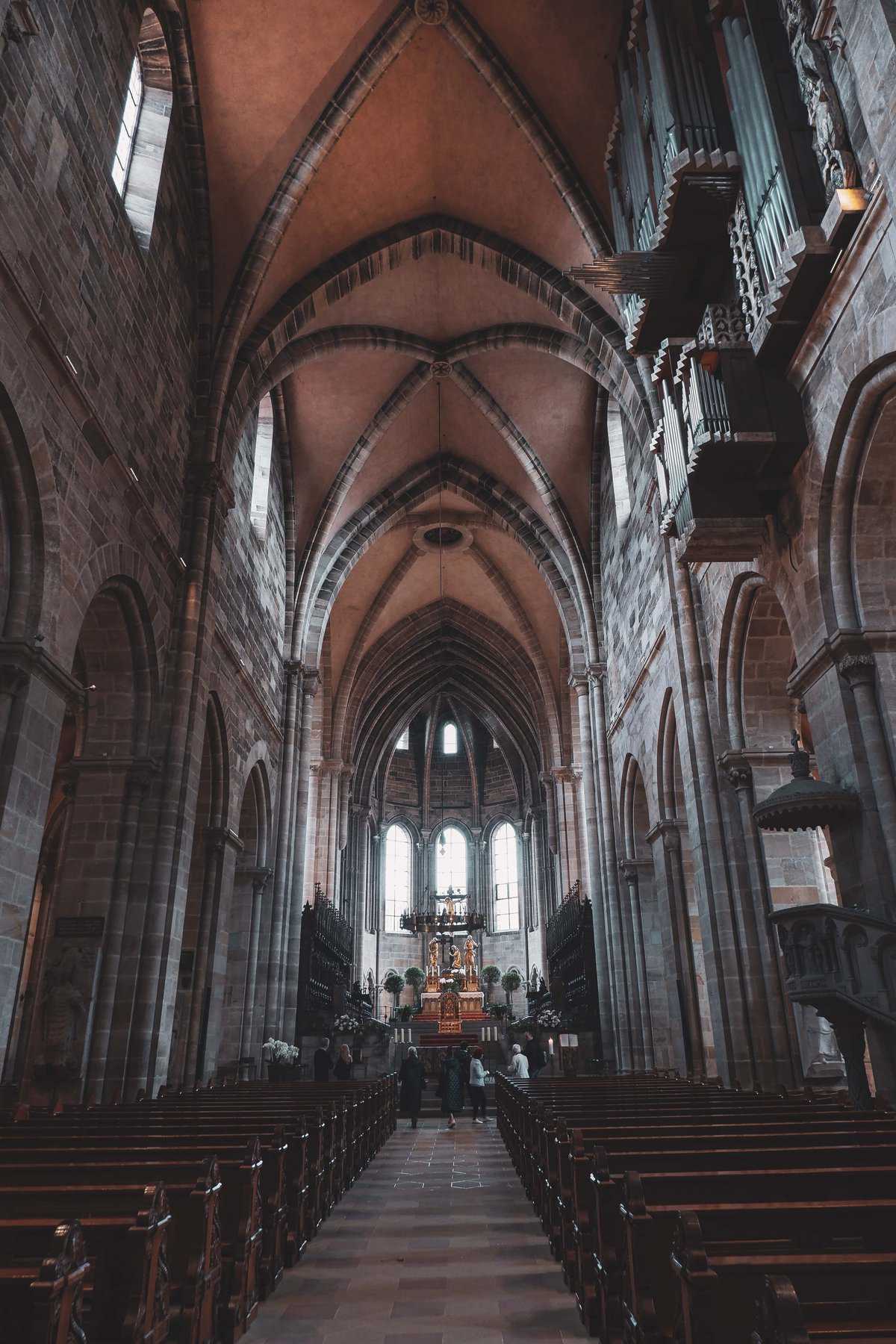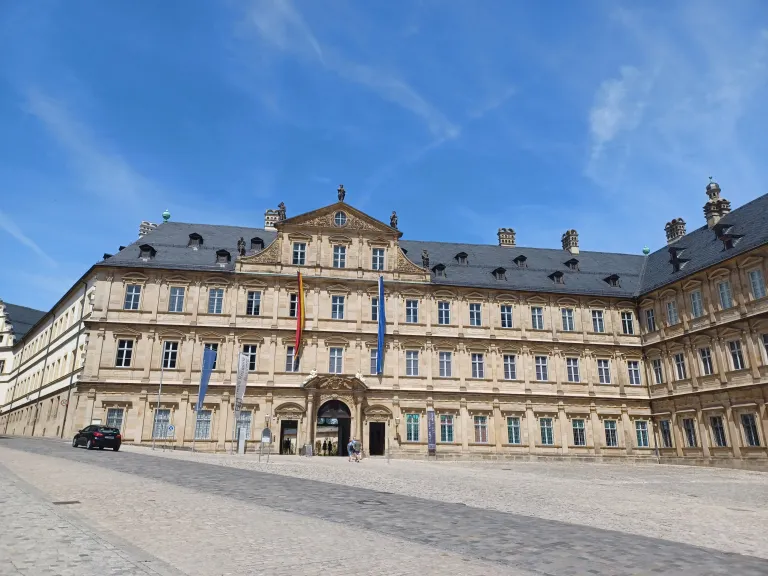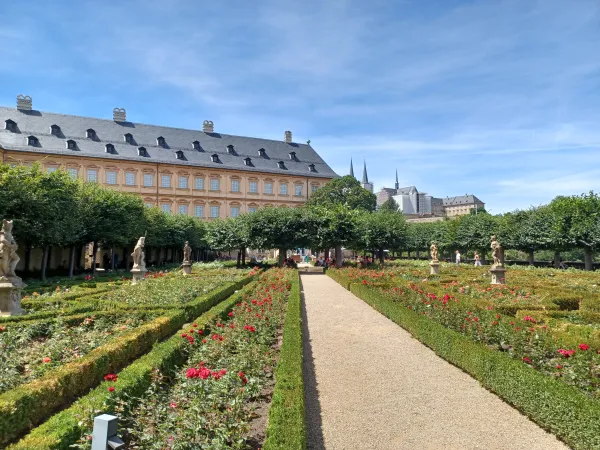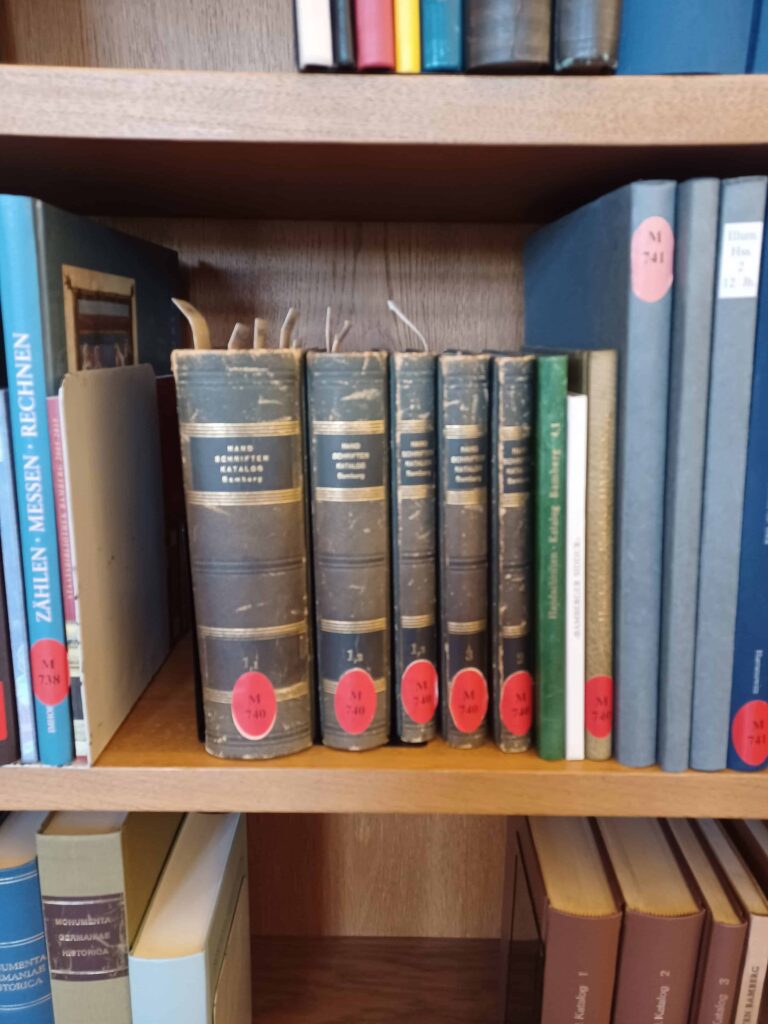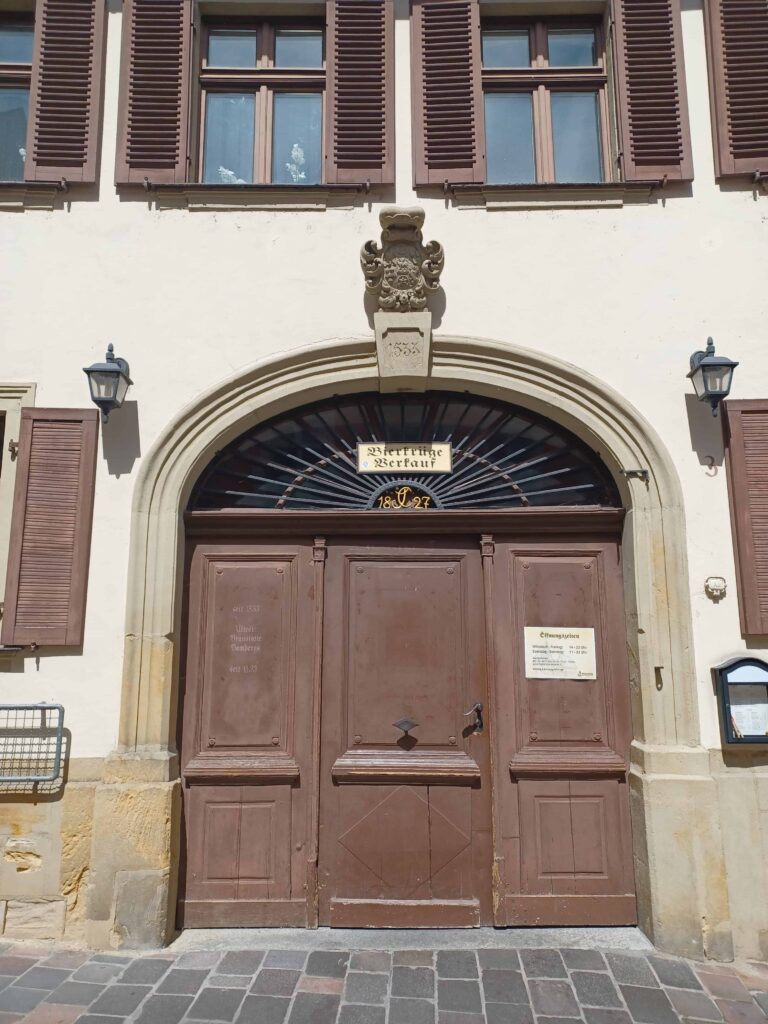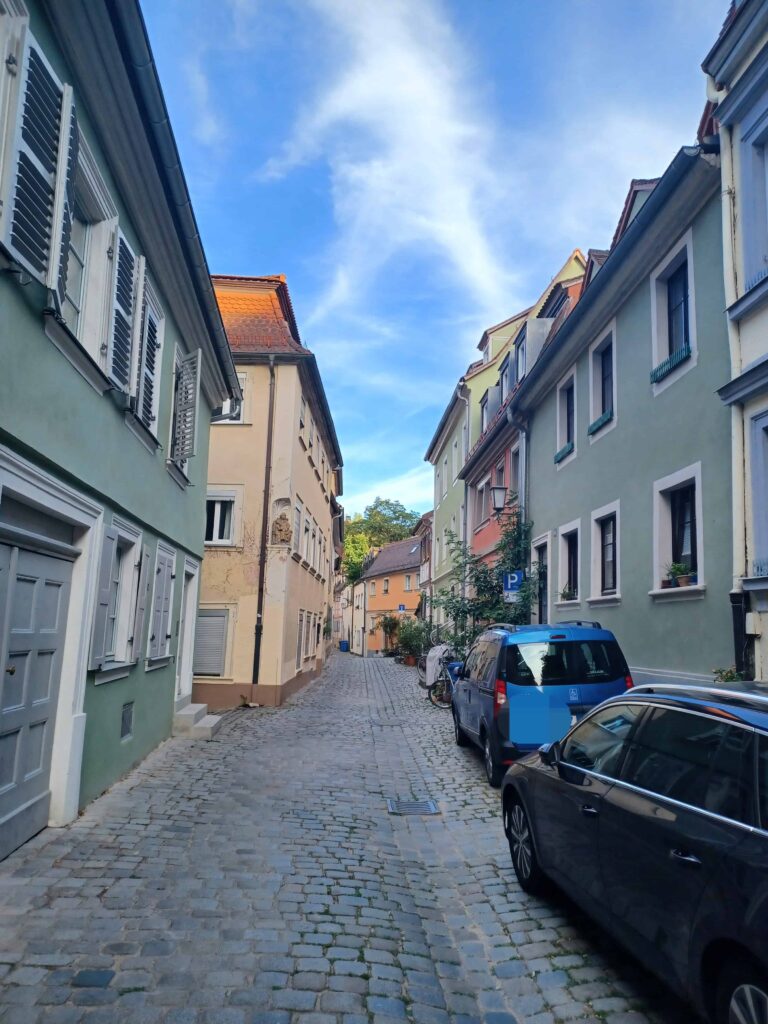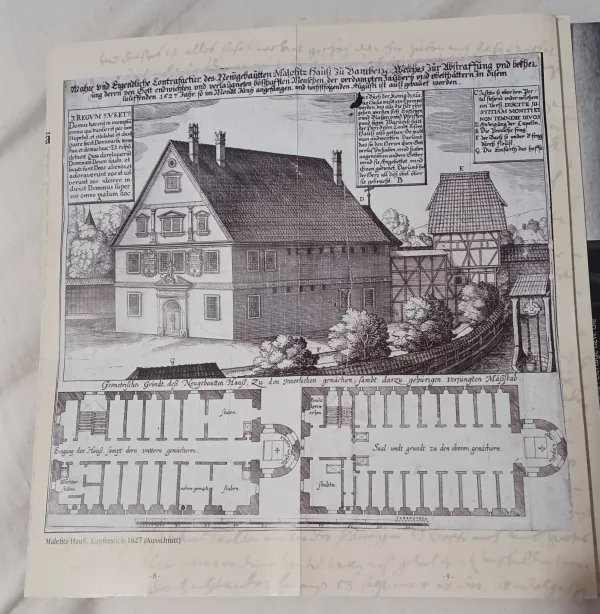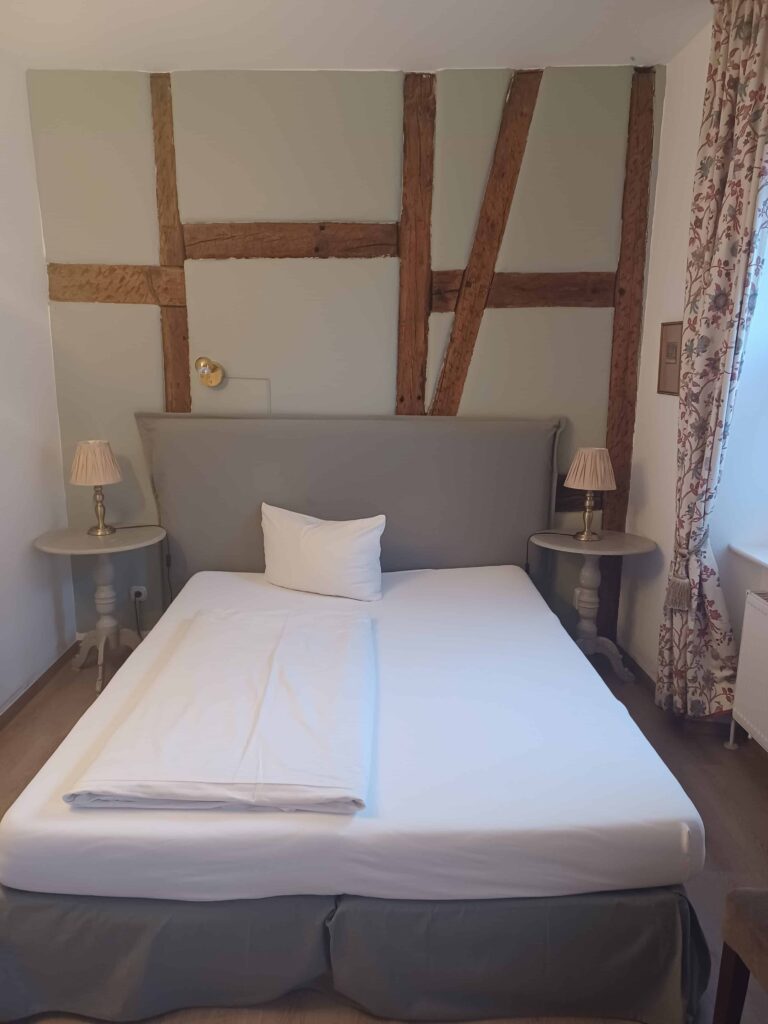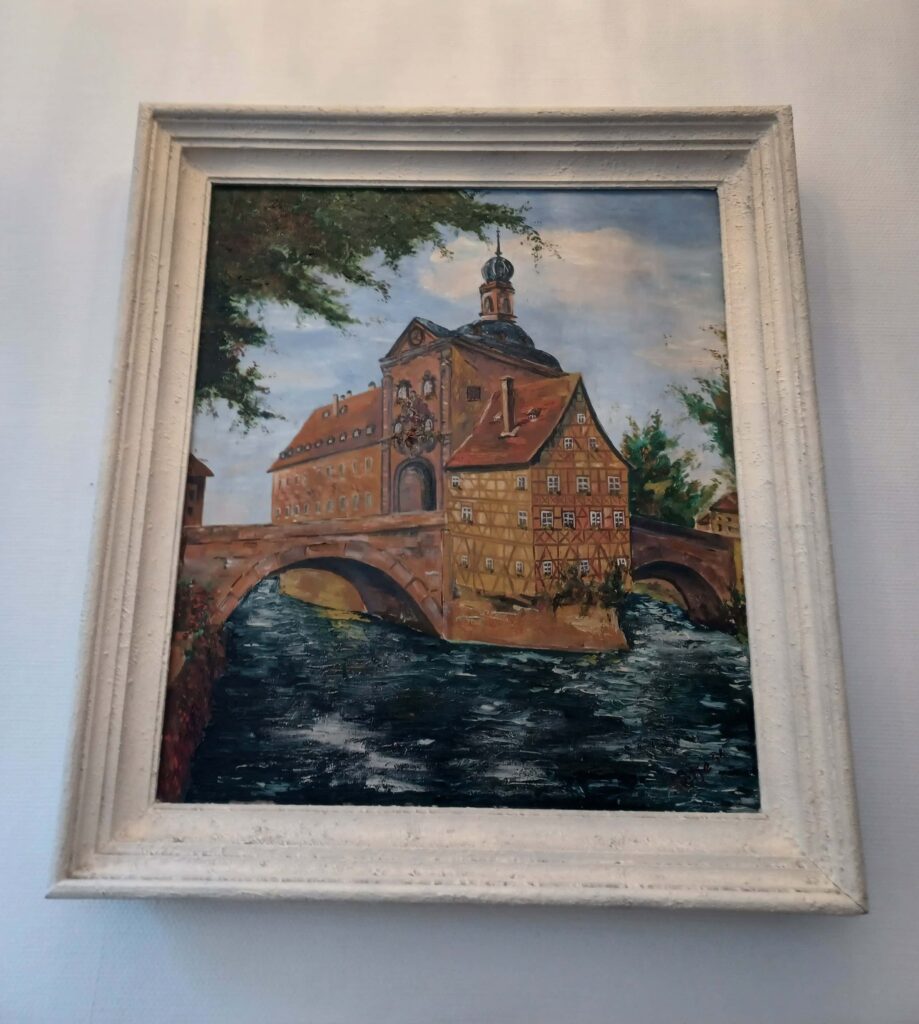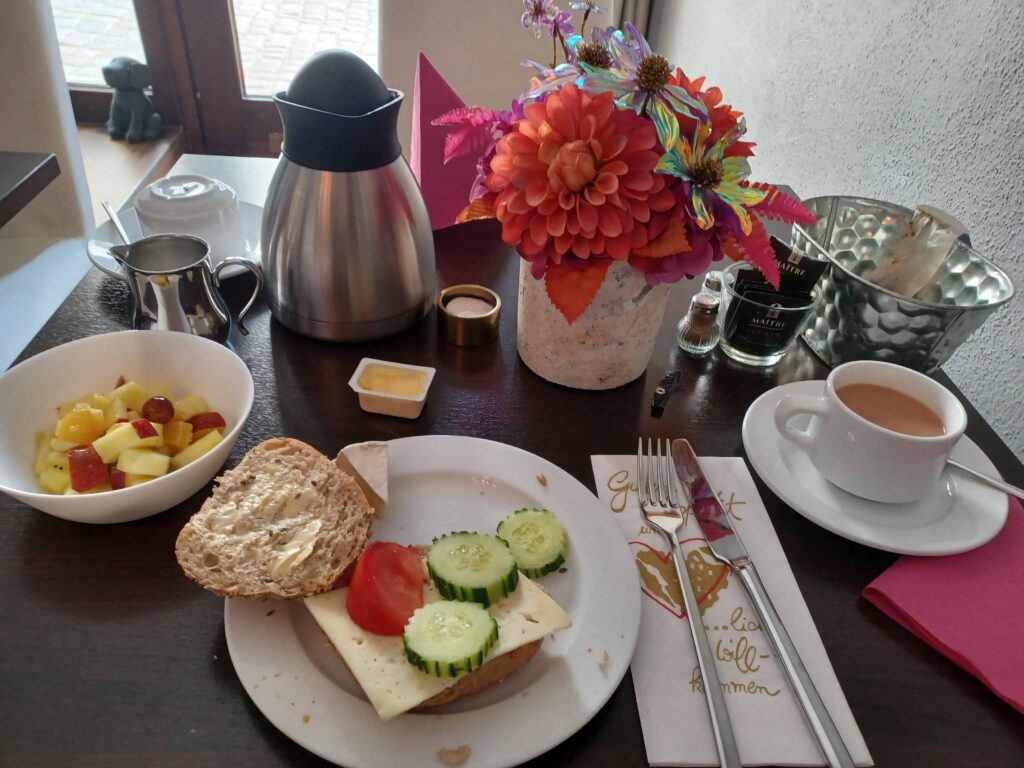Québec City (or Québec) is the capital and second largest city of the mostly French Canadian province of Québec. Same as in other parts of Canada, different First Nations people have called this area home for thousands of years.
The French explorer Samuel de Champlain first founded a community called New France here in 1608. Soon after, the British arrived in this area as well. During the Seven Years War (1756-63), the French lost Québec City to the British in 1759. After Canada’s birth in 1867, Québec City went back into French hands.
I visited this city for two days in July 2023 and liked it very much! Its main attraction is the Vieux Québec (Old Québec) district, which became a UNESCO World Heritage Site in 1985. Old Québec is famous for cobblestone streets, European charm, unique historic sites, culture, and a vibrant restaurant scene!
So without further ado, here are 11 Reasons to Visit Québec City!
Disclosure: I only recommend products that I’ve used in the past, and all opinions expressed in this post are my own. This post contains affiliate links. If you use one of the links throughout the page to buy something, I may earn a small commission at no extra cost to you. Thank you!
Visit the Basilique-Cathédrale Notre-Dame de Québec
Address: 16 Rue De Buade, Québec, QC G1R 4A1, Canada
The majestic Basilique-Cathédrale Notre-Dame de Québec (Cathedral-Basilica of Notre Dame de Québec) is a Roman Catholic cathedral in Old Québec. It’s the oldest church in Canada!
The original building was completed back in 1647, but it burned down and had to be rebuilt several times. Today, the Basilique-Cathédrale de Notre-Dame de Québec is a National Historic Site of Canada as well as a UNESCO World Heritage Site.

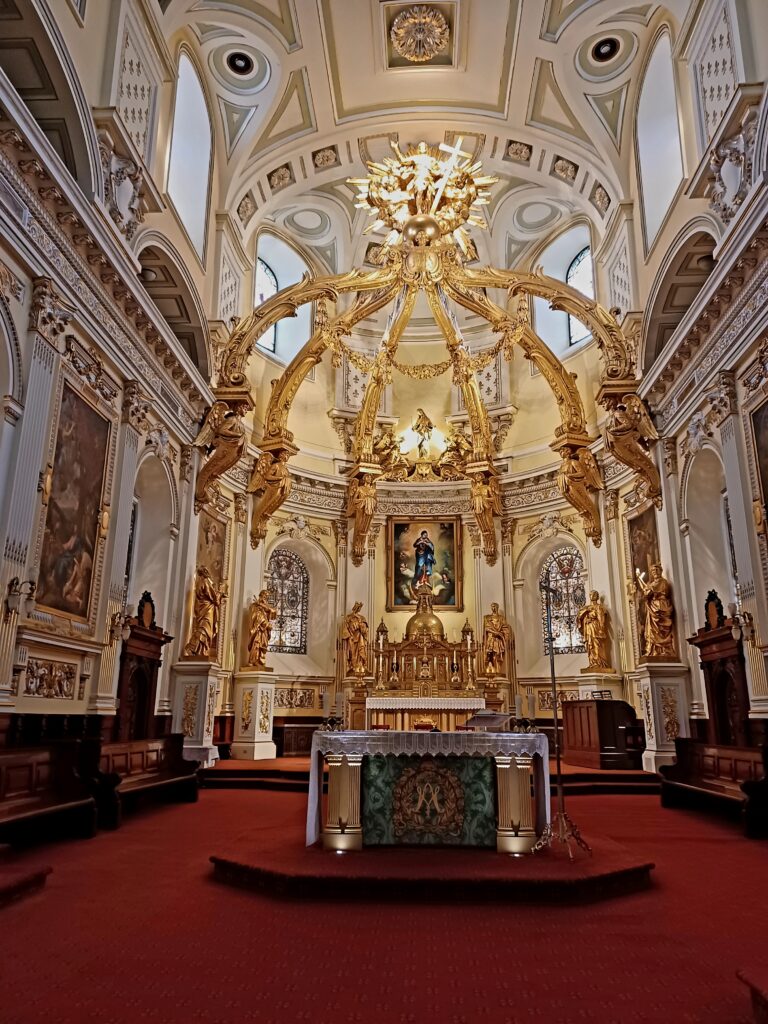
The Basilique-Cathedrale Notre-Dame de Québec from the outside (Photo credit: Wilfredo Rafael Rodriguez Hernandez on Wikimedia Commons) and the altar area.
While the cathedral looks iconic from the outside, its interior looks even more impressive! I especially liked the golden statues above and behind the altar. It’s also home to one of the eight Holy Doors in the world!
Admission is free and the cathedral is open 365 days a year.
Shop at La Boutique de Noël de Québec
Address: 47 rue De Buade, Québec, QC G1R 4A2, Canada
People who feel Christmassy all year can be sure to find great goodies at La Boutique de Noël de Québec (Christmas Boutique of Québec)! They carry Christmas tree ornaments, nutcrackers, snow globes, candles, lanterns, Christmas stockings, and so much more!

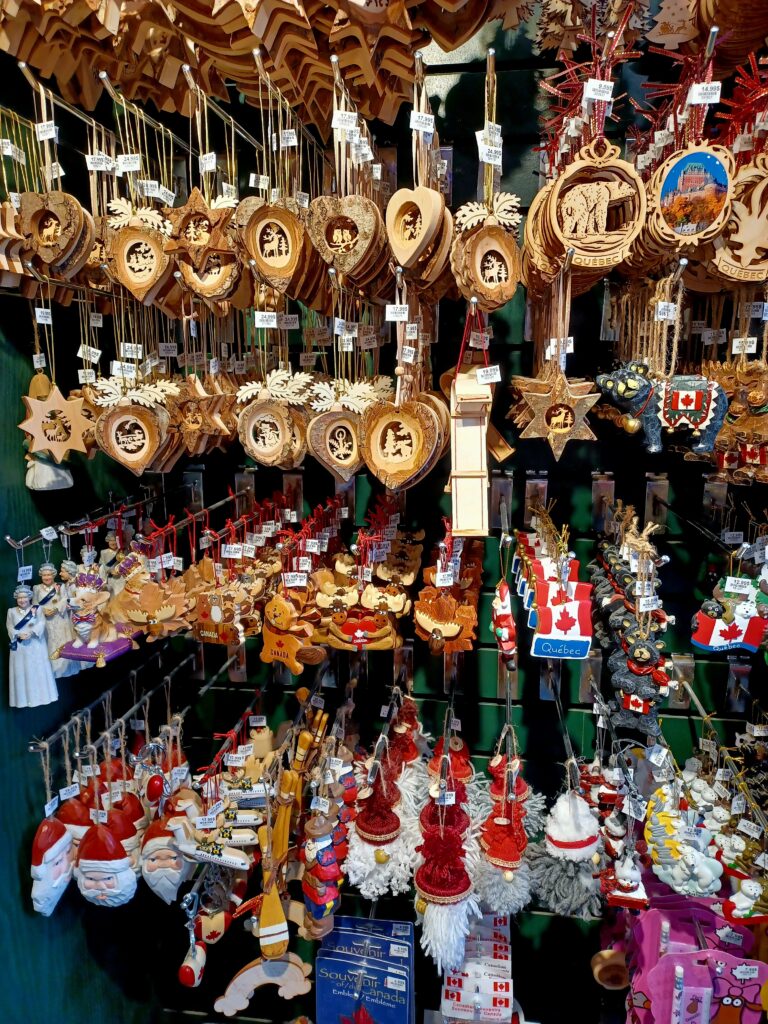
La Boutique de Noël de Québec is open daily from 10 am to 6 pm (except December 25 and January 1).
Visit the Dufferin Terrace & Fairmont Le Château Frontenac Hotel
Address: Rue des Carrières, Québec, QC G1R 5J5, Canada
The 430 meter (1,410.8 ft) long wooden Dufferin Terrace offers great views of the St. Lawrence River and its surrounding area. Samuel de Champlain first built it in 1620 as the St. Louis Fort and later, the governor’s residence was added underneath the terrace.
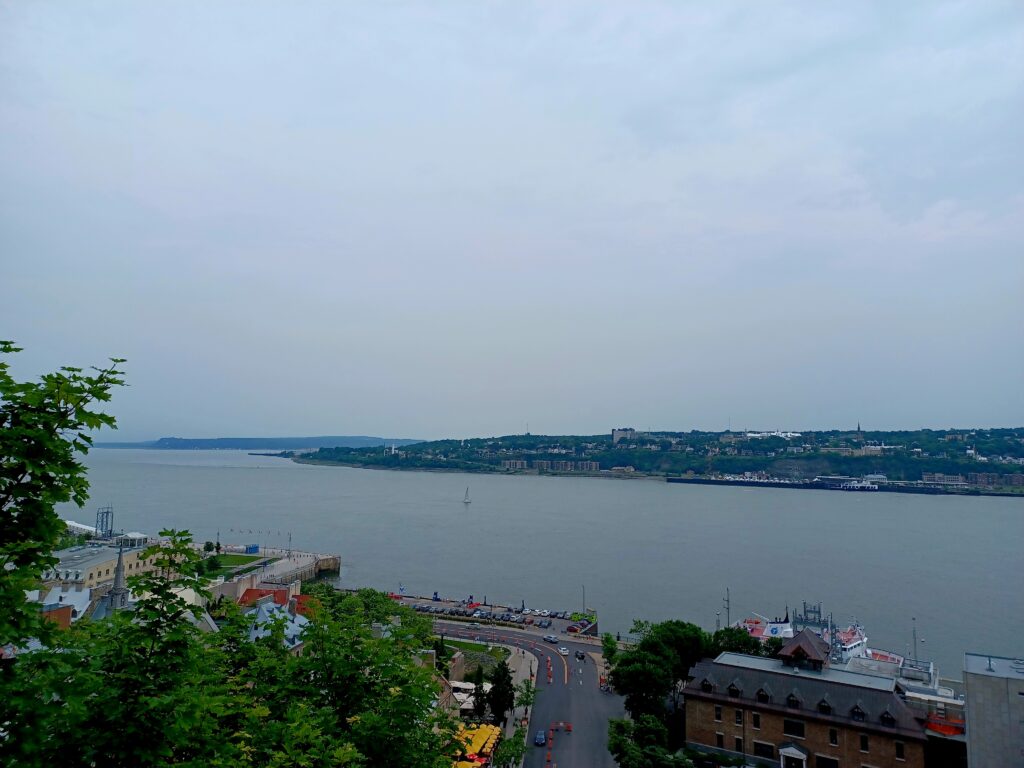
Unfortunately, a fire wrecked the terrace and governor’s home in 1834. The boardwalk was restored in 1838, and opened to the general public soon after. Besides, you can visit the ruins of the governor’s residence at the Forts-et-Châteaux-Saint-Louis archeological crypt underneath the Dufferin Terrace today.
Many people come to Dufferin Terrace to relax and watch street performers in the summer. It’s also famous for firework displays! If you’re a dare devil, go tobogganing down the wooden sledding runs in the winter, with speeds going up to 70 km/h (43.5 mph)!
Another popular spot next to Dufferin Terrace is the iconic Fairmont Le Château Frontenac Hotel (opened in 1893). It has more than 600 rooms on 18 floors and is one of the most photographed hotels in the world!
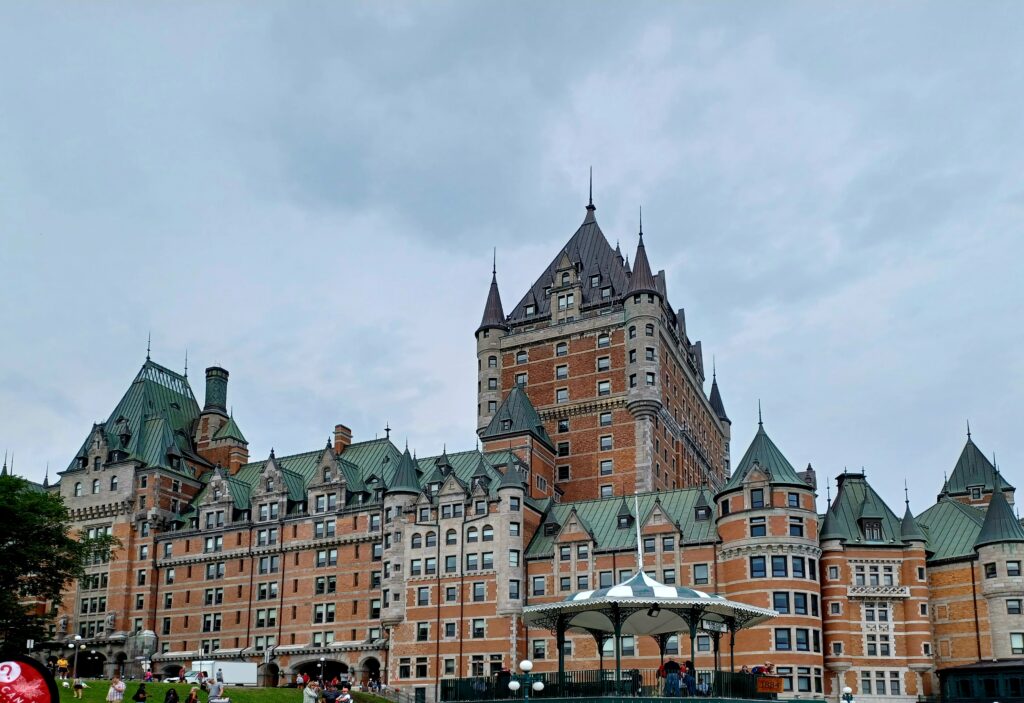
Walk up the Stairs to The Citadelle de Québec
Address: 1 Côte de la Citadelle, Québec, QC G1R 3R2, Canada
Further up the stairs from the Dufferin Terrace, there’s The Citadelle de Québec. It’s the oldest British fortress in North America and was completed in 1850. The Americans tried to invade Canada in 1812, so the British decided to build it for protection.
The Citadelle de Québec is still in operation today and is the home of the Royal 22e Régiment, the Canadian Military Forces’ only French-language regular force infantry regiment.

You can watch the Changing of the Guards (in summer), walk around the outside fortress, join a guided tour (in French or English) around the Musée Royal 22e Régiment (museum), and listen to the Beating of the Retreat.
Admission is 18 CAD per person and includes all of these activities. The Citadelle de Québec is open daily from 10 am to 5:30 pm (early September to mid-May) and 9 am to 5:30 pm (mid-May to early September).
Stroll around The Plains of Abraham
Only a few steps away, you’ll find the The Plains of Abraham. This is where French and English troops fought over the reign of Québec City and the rest of Canada on September 13, 1759. In less than 30 minutes, the British had won this historic battle.
Today, The Plains of Abraham is a 103-hectare urban park for walking, relaxing, playing sports, visiting open air festivals and concerts, and cross-country skiing and snow shoeing in the winter months.
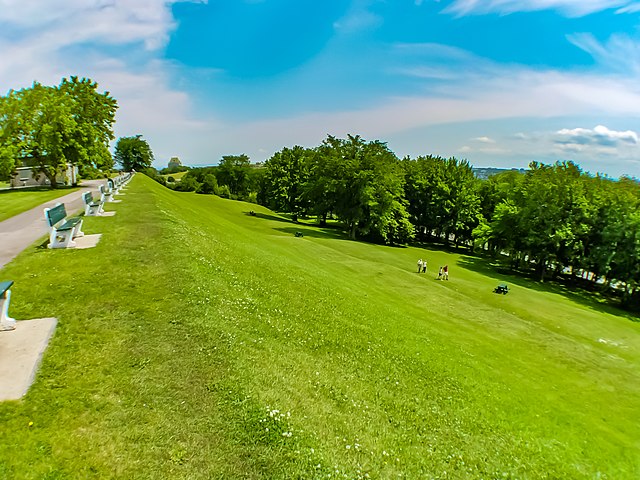
The Plains of Abraham Museum encourages visitors to learn about the battles that took place here. You can choose between an interactive museum experience or a guided tour.
It’s open daily from 9 am to 5 pm. Admission is free on Canada Day (July 1) and Remembrance Day (November 11) every year.
Get Lost Around Old Québec for a While
Thanks to its cobblestone streets, European architecture, and cultural and historic attractions, Old Québec is the most popular district to wander around the city! Besides, it’s the most intact fortified town north of Mexico, and this is where French North America came to life more than 400 years ago!
You’ll spot many attractions here or nearby, like the Cathedral-Basilica of Notre Dame de Québec, The Morrin Centre, The Plains of Abraham, and the Fairmont Le Château Frontenac Hotel. I also found the colourful Umbrella Alley (Rue du Cul-de-Sac, Québec, QC G1K 4H6, Canada), which looks super cool!
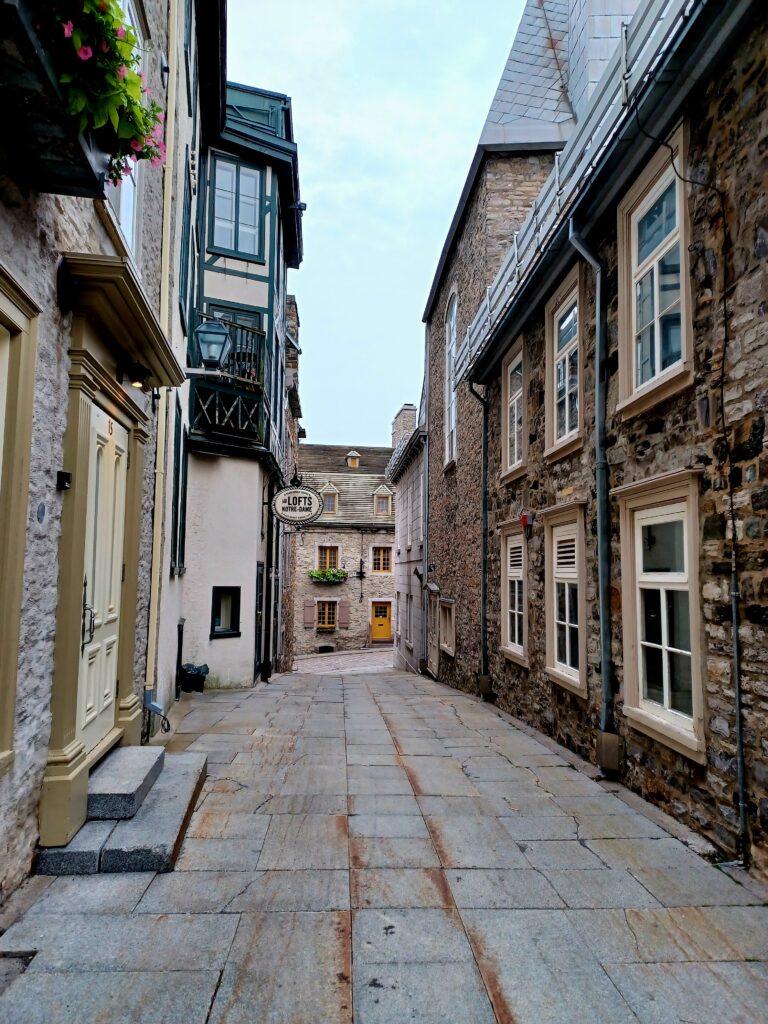
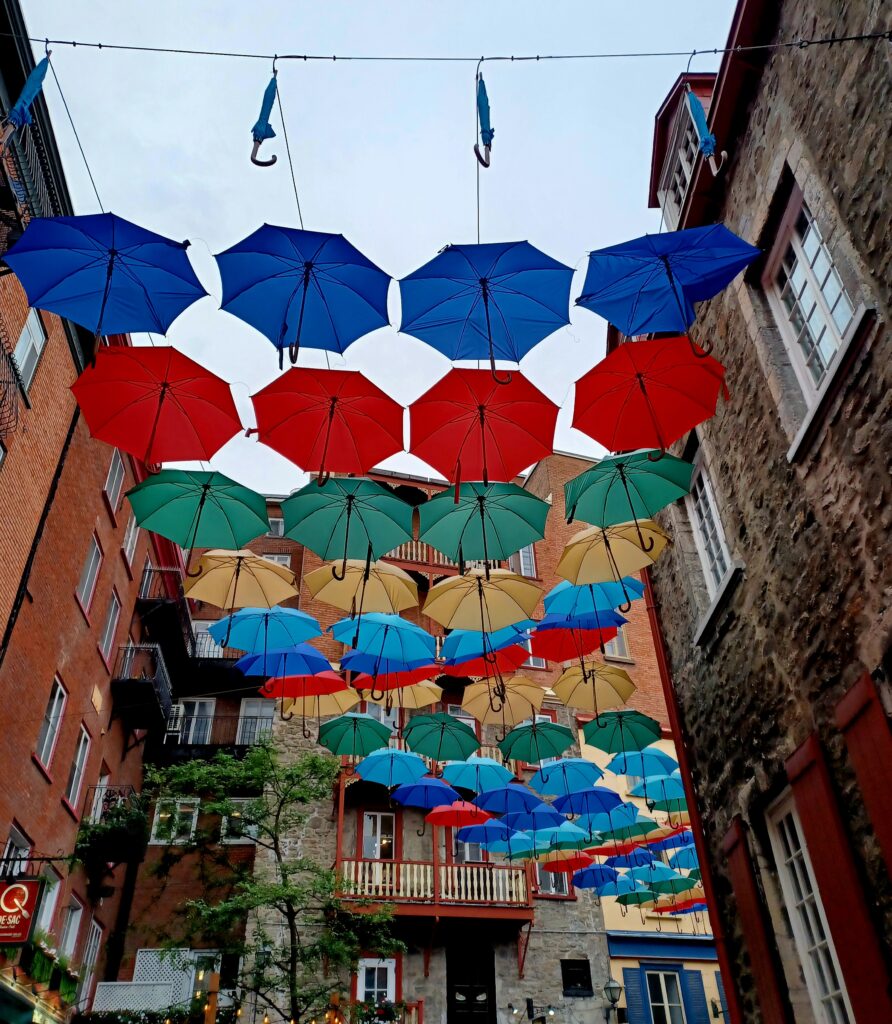
One of the historic streets in Old Québec and the Umbrella Alley.
Whether you’re into tourist shops or unique boutiques, Rue Petit-Champlain (Petit Champlain Street) has it all! It’s best to explore this area on foot, so you don’t miss anything special! There are tons of restaurants, cafés, and ice cream parlours in Old Québec as well.
Visitors can also join a guided walking tour around this district. Two cool sounding examples are the Free Walking Tour of Québec with local guide Samuel Dubois or a Ghost Tour of Québec (May 1 to October 31)!
Eat some Poutine!
Now let’s take a break from exploring and grab some Poutine! While it’s a popular dish all over Canada, it was invented right here in the province of Québec.
Poutine consists of only three main ingredients: French fries, cheese curds, and gravy. So it’s the perfect comfort food to dig in after a long day! I had vegetarian poutine at Le Chic Shack (15 Rue du Fort, Québec, QC G1R 3Z8, Canada), which was very tasty!
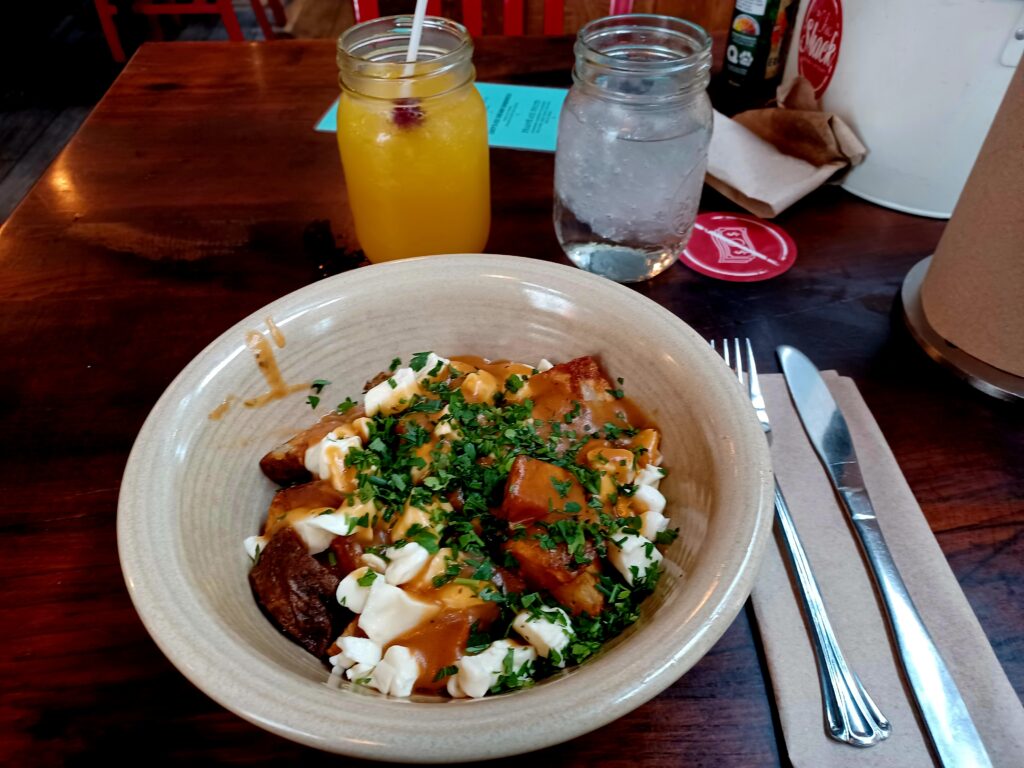
Visit The Morrin Centre & Maison de la Littérature
Do you love books? Then head to The Morrin Centre (44 Chau. des Écossais, Québec, QC G1R 4H3, Canada)! This Victorian English-language public library opened more than 200 years ago, and used to be one of Québec City’s first prisons. Public hangings occurred here as well!
Today, there’s a selection of 27,000 older and newer books here, and the décor is stunningly beautiful! They also offer guided Discovery Tours on Fridays, Saturdays, and Sundays, which includes a visit to the former jail cells! Besides, you can join events, e.g. the Annual Writers’ Festival and readings.
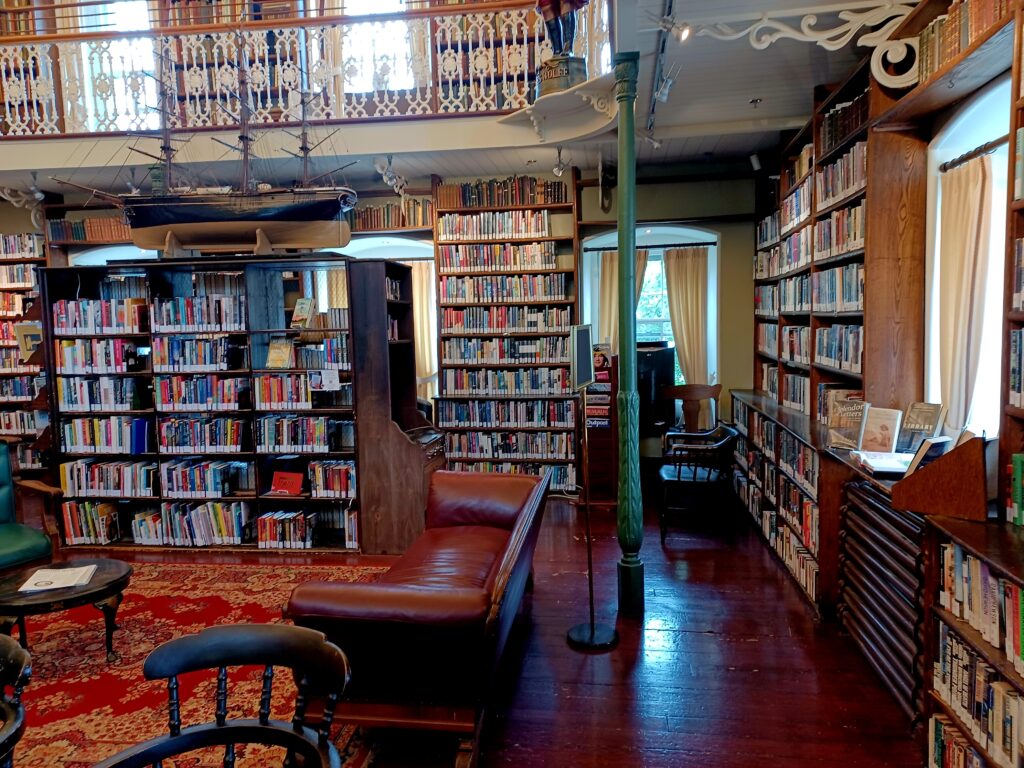
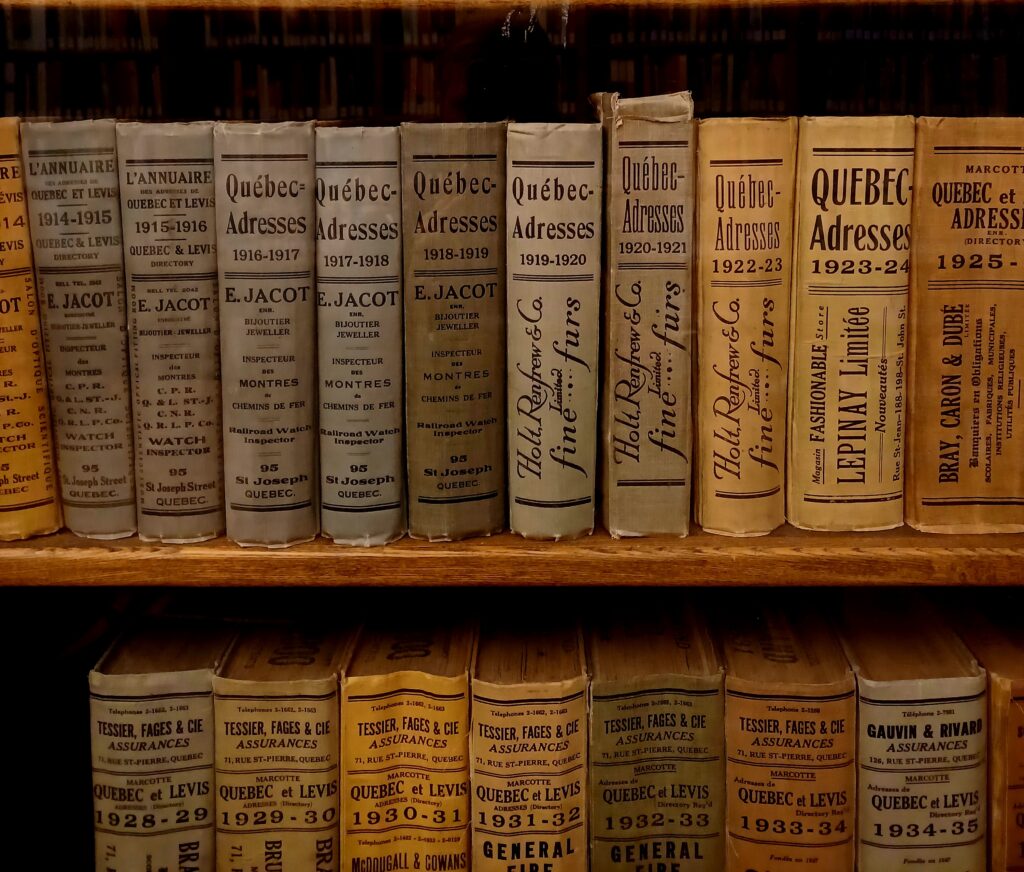
Before entering the Library area, you need to buy a Day Pass of C$ 5.00 on site. The Morrin Centre is open Wednesday to Sunday (12 to 4 pm, except 10 am to 4 pm on Saturdays).
Right across the street, you can’t miss the equally stunning Maison de la Littérature or House of Literature (40 Rue Saint-Stanislas, Québec, QC G1R 4H1, Canada)! This French-language public library is inside a former Methodist church that opened back in 1848.
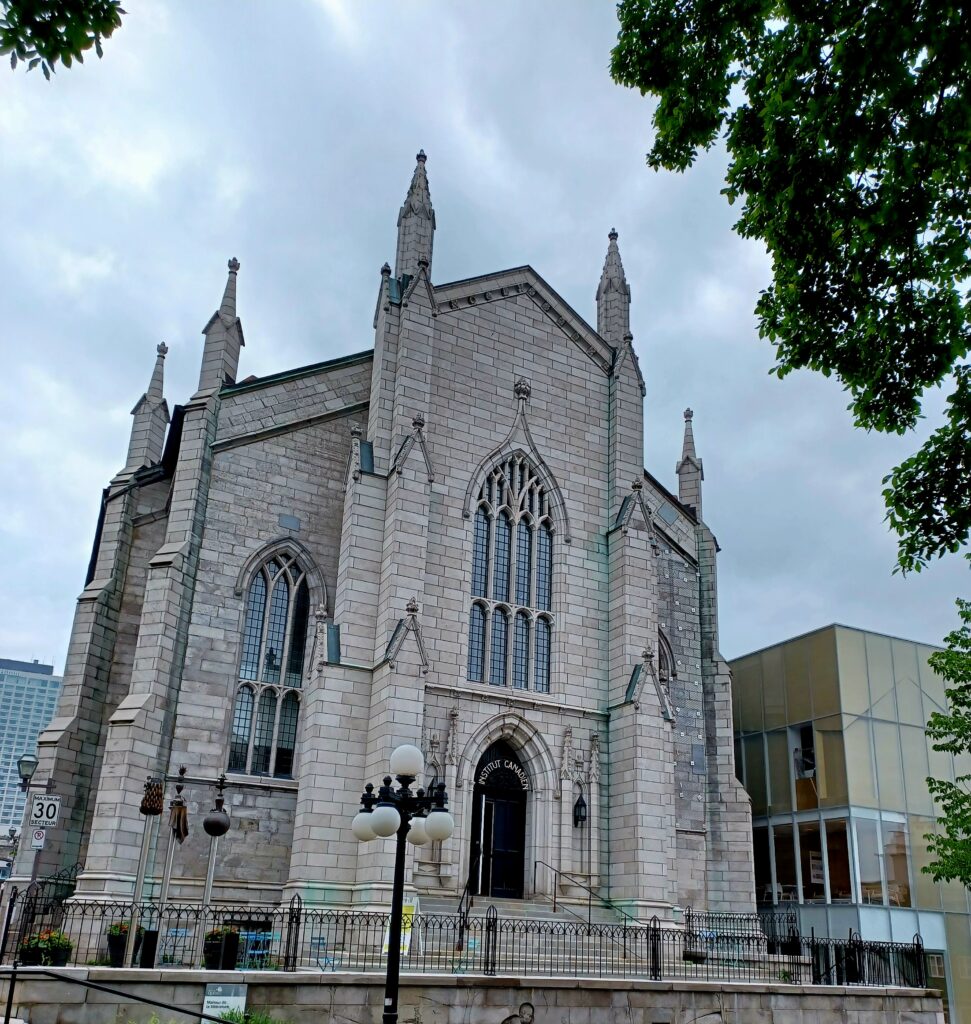
Everyone is welcome to visit the library, and there are writing rooms, a comic book workshop, creation studio, writer’s residence and a literary stage as well. Besides, the Maison de la Littérature is proud to host workshops, conferences, and shows throughout the year.
The Maison de la Littérature is open Tuesday to Sunday, and admission is free.
Admire some Amazing Street Art around the City
Last but not least, it’s worth watching out for some unique street art in Québec City!
Although all artwork was awesome, my favourite was the sticker with Sid Vicious from the Sex Pistols on it! 😀 I stumbled upon it while walking along Rue Saint-Joseph Est in the Saint-Roch Neighbourhood, a former working-class district of the city.
It’s about 25 minutes of a walk from Old Québec, and is famous for quirky boutiques, bars, cafés, microbreweries, and restaurants.
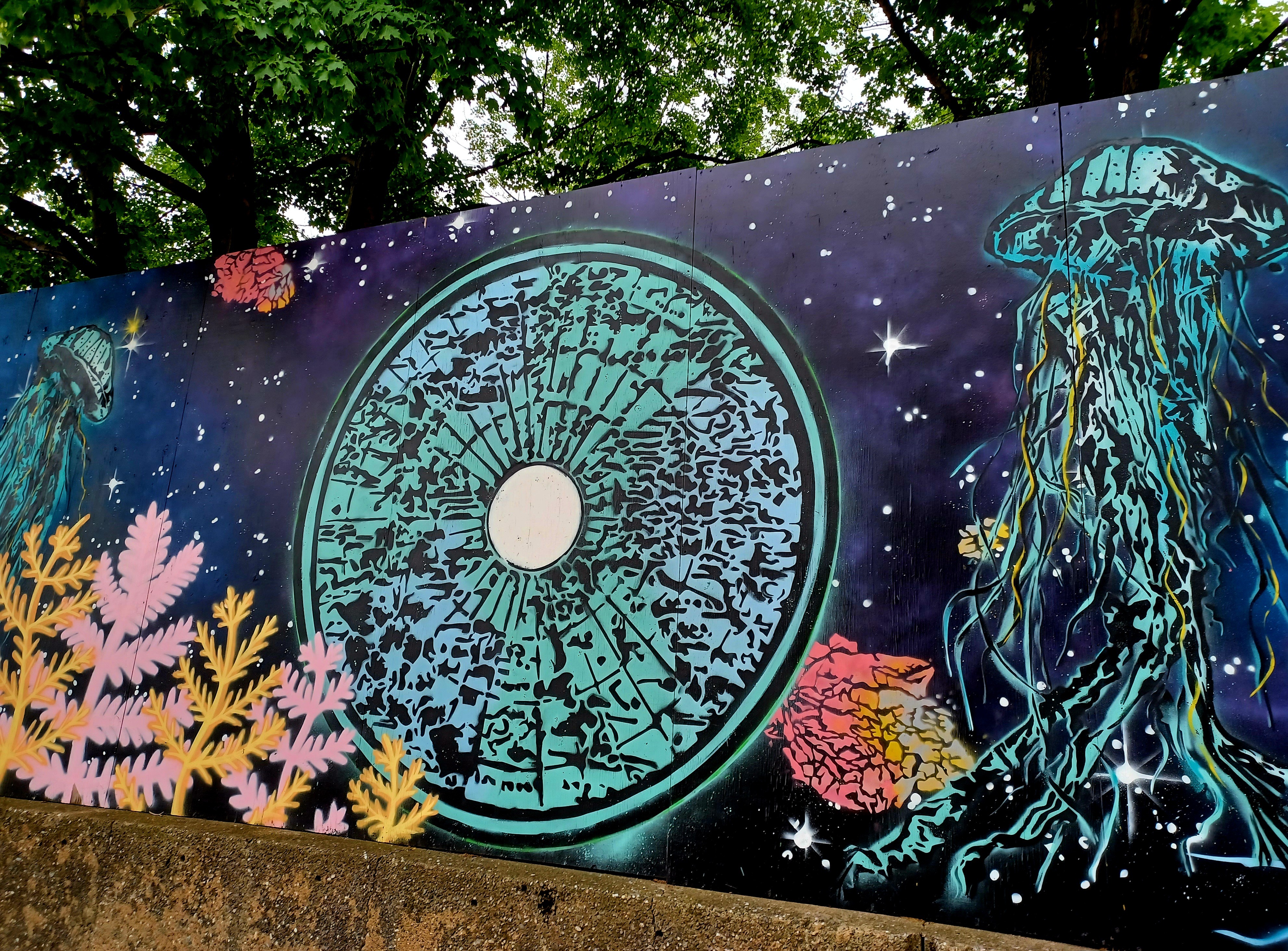


Conclusion
As you can see, Québec City is a great place to visit for a few days! Whether you’re into European-influenced history or culture, trying tasty poutine, shopping, reading books, or cool artwork, this city has it all!
My favourites were walking around The Morrin Centre, exploring Old Québec and the Saint-Roch Neighbourhood, and spending time on the Dufferin Terrace!
If you’re looking for even more than 11 Reasons to Visit Québec City, there are some cool events and attractions happening during the year.
For example, join the Saint Jean Baptiste Day celebrations on June 24, or enjoy the Indian Summer in the fall. If you like winter, check out the Québec Winter Carnival in February and the only Ice Hotel in North America (January to mid-March)!
So I hope I inspired you to visit this cool city someday! 😀
Spending more time in Eastern Canada or the Maritimes? Then check out these posts:
The 16 Best Things To Do in Fredericton, NB
Is Halifax, Nova Scotia Worth Visiting in 2024? (Guest post written for Veggies Abroad)

